|
Books Should Be Free Loyal Books Free Public Domain Audiobooks & eBook Downloads |
|
|
Books Should Be Free Loyal Books Free Public Domain Audiobooks & eBook Downloads |
|
Religion |
|---|
|
Book type:
Sort by:
View by:
|
By: Valmiki (ca. 400 BC?) | |
|---|---|
 The Ramayana, Book 1
The Ramayana, Book 1
The Ramayana is an ancient Sanskrit epic. It is attributed to the Hindu sage Valmiki and forms an important part of the Hindu canon (smṛti). The Ramayana is one of the two great epics of India, the other being Mahabharata. It depicts the duties of relationships, portraying ideal characters like the ideal servant, the ideal brother, the ideal wife and the ideal king. | |
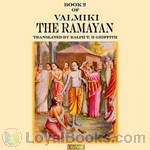 The Ramayana Book 2
The Ramayana Book 2
The Ramayana is an ancient Sanskrit epic. It is attributed to the Hindu sage Valmiki and forms an important part of the Hindu canon (smṛti). The Ramayana is one of the two great epics of India, the other being Mahabharata. It is the story of Rama, who emabrks on an epic journey followed by the fight with Ravana, the demon king who abducted Rama's wife, Sita. The epic depicts the duties of relationships, portraying ideal characters like the ideal servant, the ideal brother, the ideal wife and the ideal king. (Introduction by Om123) | |
By: Various | |
|---|---|
 Christmas Carol Collection
Christmas Carol Collection
Though carols are traditionally associated with Christmas, this was not always the case. “Carol” comes from the French word 'carole' which means circle dance accompanied by singing. It was part of any festivity and gradually came to be associated with holidays like Christmas. In England, festivities were banned following the Civil War and Protestantism, but many song writers and Protestants wrote musical works to be sung at Christmas and these were referred to as “carols.” Today, Christmas anywhere in the world is incomplete without carol singers and songs... | |
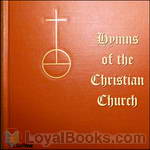 Hymns of the Christian Church
Hymns of the Christian Church
A collection of classic Christian hymns spanning the centuries. Some of the hymns are read; others are sung. | |
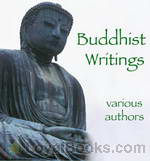 Buddhist Writings
Buddhist Writings
An anthology of Buddhist scriptures, appropriate as an introduction to its vast literature, or as a sampler for those who want to better understand Buddhism. The selections in this anthology are primarily from the Theravada school of Buddhism. | |
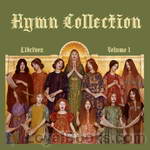 Hymn Collection
Hymn Collection
A selection of twenty hymns sung in this recording. | |
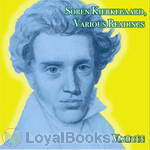 Soren Kierkegaard, Various Readings
Soren Kierkegaard, Various Readings
The writings listed here represent books about Soren Kierkegaard. A fragment of his work, On the Dedication to "That Single Individual", has made it to the public domain. Who was Soren Kierkegaard? He was a Danish philosopher and religious author; b. Copenhagen May 6, 1813; d. there Nov. 11, 1855. His father, Michael, a clothing merchant, once cursed God when he was young. This one incident caused him so much distress that it affected him with a deep melancholy, which he transferred to poor Soren... | |
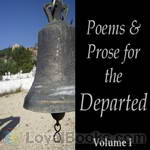 Poems and Prose for the Departed
Poems and Prose for the Departed
This is a collection of short poems and readings, both religious and secular, on death and bereavement. | |
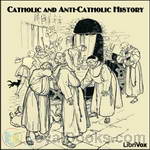 Catholic and Anti-Catholic History
Catholic and Anti-Catholic History
G.K. Chesterton and James Walsh join Hilaire Belloc in an energetic rollout of the means by which history becomes propaganda, to the damage, not only to truth, but to the human soul. | |
 Tiger and Tom and Other Stories for Boys
Tiger and Tom and Other Stories for Boys
| |
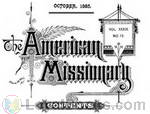 The American Missionary — Volume 54, No. 3, October, 1900
The American Missionary — Volume 54, No. 3, October, 1900
| |
 Correspondence Relating to Executions in Turkey for Apostacy from Islamism
Correspondence Relating to Executions in Turkey for Apostacy from Islamism
| |
 The Baptist Magazine, Vol. 27, January, 1835
The Baptist Magazine, Vol. 27, January, 1835
| |
 Seven Roads to Hell
Seven Roads to Hell
No one goes to hell by committing sin in the abstract, sin in general. Our character traits, talents and dispositions, our experiences — everything about us points out to us a particular road to hell — one of the seven that are called the capital sins. For us, this or that particular one is the fastest and easiest because of who we are, what we are, where we find ourselves. And the road sign will read either pride, covetousness, lust, anger, gluttony, envy or sloth. The seven capital sins are called capital because they are the sins of primary importance and inevitably spawn a whole litter of other sins... | |
 Reformation Collection Volume 1
Reformation Collection Volume 1
This volume of the Reformation collection begins with a summary of Protestant belief in the form of the Belgic Confession and John Calvin's 'cover letter' to Francis I of France requesting that he read Calvin's Institutes of the Christian Religion to understand the Protestant doctrine from its source rather than secondhand. 100 aphorisms summarising the contents of the Institutes follow as well as some instructions given by Thomas Cranmer showing the effect of the Reformation for clergy and parishes, as does a short protestation from the reformer William Tyndale expressing the Reformation methodology privileging the Bible as the source of doctrine and practice... | |
 Early Church Collection Volume 1
Early Church Collection Volume 1
The collection begins with two short works on the Trinity by Gregory of Nyssa, followed by two works on Christology by Theodoret and Pope Leo I. Victorinus interprets Genesis 1 allegorically to justify certain early church practices and traces the number 7 through the whole Bible. Hippolytus lists various liturgical practices of the Roman church at the start of the 3rd century with potentially much earlier origins. In "On the Faith", Gregory of Nyssa defends the divinity of the Son of God and the Holy Spirit... | |
 Creeds of Christendom
Creeds of Christendom
This is based on Philip Schaff's Creeds of Christendom taking only the creeds that he selected, using the translations he supplied where possible but rearranged chronologically but excluding his commentary and notes. "He who wishes to grow strong in his religious life, let him, I say, next to the Bible, feed himself on the great Creeds of the Church. There is a force of religious inspiration in them which you will seek in vain elsewhere. And this for good reasons. First, because it is ever true that it is by the truth that sanctification is wrought... | |
 Reformation Collection Volume 2
Reformation Collection Volume 2
This volume of the Reformation collection, which has a particular focus on the English Reformation, begins with William Tyndale's lively tract on the key Reformation doctrine of Justification by faith alone. Then follow two historical accounts of the reception that Reformation ideas received. Martin Luther works line by line through the popular Marian hymn Salve Regina expressing his disagreement. Christ the End of the Law is John Calvin's summary of the gospel message, written as the preface to the Geneva Bible... | |
 Age of the Puritans Volume 1
Age of the Puritans Volume 1
This volume of The Age of the Puritans begins with William Perkin's concise summary of Christian doctrine written in response to popular misconceptions of the time and Robert Rollock's scheme for logically dividing doctrine into key topics. Rollock then explains the relationship between the written Scriptures and what he terms the "lively voice" heard in other ages, pre-empting what would later become the Quaker-Puritan debates. B.B. Warfield gives a 'best of' John Arrowsmith's Armilla Catechetica ... | |
 Reformation Collection Volume 3
Reformation Collection Volume 3
This volume of the Reformation collection, begins with John Calvin's summary of the contents for the Bible from the preface to the Geneva Bible. Catherine Parr, last wife of Henry VIII, contributes her "Prayers or Meditations", intended as a shortened Protestant equivalent to Thomas à Kempis' The Imitation of Christ. Next come accounts of trials and martyrdoms: Walter Mill, the last martyr of Scotland, John Bradford, an anonymous account of Protestants in Norfolk and Suffolk to commissioners sent by Mary I, Hugh Latimer's examination as an old man and the execution of Henry Grey, father of Lady Jane Grey... | |
 Christmas Miscellany 2021
Christmas Miscellany 2021
Seven chapters involving Christmas from different books. Plus part 8 which is twelve verses about Christmas and part 9 which is four Christmas carols by Christina Rossetti. - Summary by David Wales | |
 Christianity in the 18th and 19th Century, Volume 1
Christianity in the 18th and 19th Century, Volume 1
The 30 works in this volume are arranged thematically around the following headings: materialism or anti-supernaturalism , church and state or politics , the office of the pastor , sermons and miscellaneous pieces . Note: "Receipt" in the title of section 2 means "recipe". - Summary by InTheDesert Christianity in the 18th and 19th Century, Volume 2 | |
 Early Church Collection Volume 2
Early Church Collection Volume 2
This collection begins with Augustine's response to the charge that Christians, unlike anyone else in the world, believe in things that cannot be seen, two works on christology from Athanasius and Augustine's exposition of the Apostles' Creed. Next come two responses from church leaders on what to do when Christians have participated in idolatry . After some shorter works including all the extant fragments from Papias, there are a large number of works from Rufinus: translator and editor of many of the works of Origen who suffered considerable censure for his labors as can be seen from the content of his prefaces... | |
 Christianity in the 18th and 19th Century, Volume 2
Christianity in the 18th and 19th Century, Volume 2
The 32 works in this volume contain many diverse works from the period including sermons, essays, letters, commentaries, poems and reports. Many pieces are by the Anglican writers John Newton and Augustus Toplady. Christianity in the 18th and 19th Century, Volume 1 | |
 Age of the Puritans Volume 2
Age of the Puritans Volume 2
This volume of The Age of the Puritans begins with Theodore Beza's 1575 catechism, brief and simple enough to be learned by children. William Perkins preaches a sermon on a life centred on 'Christ crucified', Pierre du Moulin, the Huguenot, on suffering as a Christian and Richard Sibbes on 1 Peter 4:18. John Owen gives his oppinion on how dissenters should consider their own excommunication. Richard Sibbes preaches sermons on 1 Peter 4:17-19 and Philippians 1:23-24. Thomas Cartwright's preface to... | |
 Early Church Collection Volume 3
Early Church Collection Volume 3
This collection begins with Augustine's exposition of the Apostles' Creed, a confession of faith attributed to Gregory Thaumaturgus and a series of statements on christology. Then come two works attributed to Hippolytus and a treatise addressed to Tatian arguing, without using Scripture, for the existence of the soul. Dionysius of Alexandria comments on the authorship of the book of Revelation and Alexander, archbishop of Alexandria excommunicates Arius . What remains of "a discourse on the Divine... | |
By: Venerable María de Jesús de Ágreda (1602-1665) | |
|---|---|
 Mystical City of God, Volume 4
Mystical City of God, Volume 4
The Mystical City of God is a book written in the 17th-century by the Franciscan nun, Venerable Mary of Jesus of Ágreda. According to María de Ágreda, the book was to a considerable extent dictated to her by the Blessed Virgin Mary and regarded the life of the Virgin Mary and the divine plan for creation and the salvation of souls. The work alternates between descriptions of the Trinity, the Virgin Mary's life, and the spiritual guidance she provides to the author, by whom her words were reproduced for the spiritual benefit and growth of the reader... | |
 Mystical City of God, Volume 1
Mystical City of God, Volume 1
The Mystical City of God is a book written in the 17th-century by the Franciscan nun, Venerable Mary of Jesus of Ágreda. According to María de Ágreda, the book was to a considerable extent dictated to her by the Blessed Virgin Mary and regarded the life of the Virgin Mary and the divine plan for creation and the salvation of souls. The work alternates between descriptions of the Trinity, the Virgin Mary's life, and the spiritual guidance she provides to the author, by whom her words were reproduced for the spiritual benefit and growth of the reader... | |
 Mystical City of God, Volume 3
Mystical City of God, Volume 3
The Mystical City of God is a book written in the 17th-century by the Franciscan nun, Venerable Mary of Jesus of Ágreda. According to María de Ágreda, the book was to a considerable extent dictated to her by the Blessed Virgin Mary and regarded the life of the Virgin Mary and the divine plan for creation and the salvation of souls. The work alternates between descriptions of the Trinity, the Virgin Mary's life, and the spiritual guidance she provides to the author, by whom her words were reproduced for the spiritual benefit and growth of the reader... | |
 Mystical City of God, Volume 2
Mystical City of God, Volume 2
The Mystical City of God is a book written in the 17th-century by the Franciscan nun, Venerable Mary of Jesus of Ágreda. According to María de Ágreda, the book was to a considerable extent dictated to her by the Blessed Virgin Mary and regarded the life of the Virgin Mary and the divine plan for creation and the salvation of souls. The work alternates between descriptions of the Trinity, the Virgin Mary's life, and the spiritual guidance she provides to the author, by whom her words were reproduced for the spiritual benefit and growth of the reader... | |
By: W. D. (William Dool) Killen (1806-1902) | |
|---|---|
 The Ancient Church Its History, Doctrine, Worship, and Constitution
The Ancient Church Its History, Doctrine, Worship, and Constitution
| |
By: W. H. Griffith (William Henry Griffith) Thomas (1861-1924) | |
|---|---|
 The Prayers of St. Paul
The Prayers of St. Paul
| |
By: W. J. (William James) Dawson (1854-1928) | |
|---|---|
 The Empire of Love
The Empire of Love
| |
By: W. K. Tweedie (1803-1863) | |
|---|---|
 Joseph and his Brethren
Joseph and his Brethren
"The story of Joseph is at once so simple that childhood is arrested and rivetted by it, and so profound that sages may deepen their wisdom by meditating on the truths which it embodies. An attempt is here made to point out some of the more important lessons which the narrative teaches,—to manifest the wisdom and the watchfulness of Providence,—and show how God on high exercises his prerogative of educing good from what we are often tempted to regard as only and hopelessly evil. While man displays... | |
By: W. M. Flinders Petrie (1853-1942) | |
|---|---|
 Religion of Ancient Egypt
Religion of Ancient Egypt
William Matthew Flinders Petrie – the father of Egyptian Archaeology – developed and applied statistical analysis to pottery from prehistoric sites and by this established seriation as a relative dating method as a major contribution to Egyptian Archaeology. In this scientific paper he describes special varieties of the conception of the supernatural in ancient Egypt. The source text also includes a list of "principal works on Egyptian religion" and a list of works "on religions ancient and modern". | |
By: W. O. E. Oesterley (1866-1950) | |
|---|---|
 Immortality and the Unseen World
Immortality and the Unseen World
The full title of this book is Immortality and the Unseen World - A Study in Old Testament Religion. Oesterley describes the beliefs that pre-Christian Hebrews and Semites held regarding the afterlife and the immortal nature of humans. The nature, form and evolution of these beliefs are derived from the Tanakh (Old Testament), comparisons with the beliefs and mythologies of neighboring cultures, and archeological finds. To develop a full study, additional beliefs of these people are also considered, including the beliefs of the constituent parts of humans; demonology, angelology, shades and the Satan; the home of the dead, ancestor worship, necromancy, and burial customs... | |
By: W. P. (William Pringle) Livingstone | |
|---|---|
 The White Queen of Okoyong A True Story of Adventure Heroism and Faith
The White Queen of Okoyong A True Story of Adventure Heroism and Faith
| |
 Mary Slessor of Calabar: Pioneer Missionary
Mary Slessor of Calabar: Pioneer Missionary
| |
By: W. S. (William Shuler) Harris (1865-) | |
|---|---|
 Mr. World and Miss Church-Member A twentieth century allegory
Mr. World and Miss Church-Member A twentieth century allegory
| |
By: W. T. (William Thomas) Stead (1849-1912) | |
|---|---|
 King of the Jews A story of Christ's last days on Earth
King of the Jews A story of Christ's last days on Earth
| |
By: Wade C. (Wade Cothran) Smith (1870?-1960) | |
|---|---|
 "Say Fellows—" Fifty Practical Talks with Boys on Life's Big Issues
"Say Fellows—" Fifty Practical Talks with Boys on Life's Big Issues
| |
By: Walter Elliott (1842-1928) | |
|---|---|
 Life of Father Hecker
Life of Father Hecker
| |
By: Walter Lowrie (1868-1959) | |
|---|---|
 Gaudium Crucis: A Meditation for Good Friday
Gaudium Crucis: A Meditation for Good Friday
A reflection on the crucifixion of Christ and its theological meanings. - Summary by KevinS | |
By: Walter Pater (1839-1896) | |
|---|---|
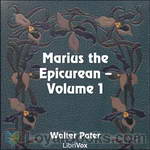 Marius the Epicurean
Marius the Epicurean
Marius the Epicurean is a philosophical novel written by Walter Pater, published in 1885. In it Pater displays, with fullness and elaboration, his ideal of the aesthetic life, his cult of beauty as opposed to bare asceticism, and his theory of the stimulating effect of the pursuit of beauty as an ideal of its own. The principles of what would be known as the Aesthetic movement were partly traceable to this book; and its impact was particularly felt on one of the movement’s leading proponents, Oscar Wilde, a former student of Pater at Oxford. | |
By: Walter Rauschenbusch (1861-1918) | |
|---|---|
 The Social Principles of Jesus
The Social Principles of Jesus
| |
By: Walter Waddington Shirley (1828-1866) | |
|---|---|
 Scholasticism: A Lecture Delivered Before the University of Oxford
Scholasticism: A Lecture Delivered Before the University of Oxford
Walter Waddington Shirley was made Regius Professor of Ecclesiastical History and Canon of Christ Church, Oxford in 1863. This short work comprises the text of a lecture he gave at Oxford University in January, 1866. In it, he describes the historical setting in which scholasticism flourished and then summarizes its features. - Summary by Barry Ganong | |
By: Warren Crocker Herrick (1898-) | |
|---|---|
 Frank H. Nelson of Cincinnati
Frank H. Nelson of Cincinnati
| |
By: Warren H. (Warren Hugh) Wilson (1867-1937) | |
|---|---|
 The Evolution of the Country Community A Study in Religious Sociology
The Evolution of the Country Community A Study in Religious Sociology
| |
By: Washington Gladden (1836-1918) | |
|---|---|
 Who Wrote the Bible? : a Book for the People
Who Wrote the Bible? : a Book for the People
| |
By: Westminster Assembly | |
|---|---|
 Westminster Larger Catechism
Westminster Larger Catechism
The Westminster Larger Catechism, along with the Westminster Shorter Catechism, is a central catechism of Calvinists in the English tradition throughout the world. The Westminster Shorter Catechism was to be "easier to read and concise for beginners" and the Larger Catechism was to be "more exact and comprehensive". The Catechism was completed by the Westminster Assembly in 1647. It was then adopted by the General Assembly of the Church of Scotland in 1648 and (with modifications relating to the civil magistrate) by the Presbyterian Synod of New York and Philadelphia in 1788. | |
By: Westminster Divines (1646) | |
|---|---|
 The Westminster Confession of Faith
The Westminster Confession of Faith
The Westminster Confession of Faith is a Reformed confession of faith, in the Calvinist theological tradition. Although drawn up by the 1646 Westminster Assembly, largely of the Church of England, it became and remains the 'subordinate standard' of doctrine in the Church of Scotland, and has been influential within Presbyterian churches worldwide. | |
By: Weymouth New Testament | |
|---|---|
 Bible (WNT) NT 13-14: 1 & 2 Thessalonians
Bible (WNT) NT 13-14: 1 & 2 Thessalonians
These are the letters of the Apostle Paul to the fellowship at Thessalonica. Both letters cover a variety of subjects, including proper conduct and wholesome relationships between believers, the impending arrival of Paul's beloved disciple Timothy, and Paul's comments about his own conduct towards his flock. The Thessalonians are mentioned in the book of Acts as having been quite open and receptive the the preaching and teaching of Paul. - Summary by Mark Penfold | |
By: Wilfred Scawen Blunt (1840-1922) | |
|---|---|
 The Future of Islam
The Future of Islam
| |
By: Wilfred Thomason Grenfell (1865-1940) | |
|---|---|
 What the Church Means to Me A Frank Confession and a Friendly Estimate by an Insider
What the Church Means to Me A Frank Confession and a Friendly Estimate by an Insider
| |
By: William Alexander Linn (1846-1917) | |
|---|---|
 The Story of the Mormons, from the date of their origin to the year 1901
The Story of the Mormons, from the date of their origin to the year 1901
| |
By: William Alexander MacKay (1842-1905) | |
|---|---|
 Zorra Boys at Home and Abroad, or, How to Succeed
Zorra Boys at Home and Abroad, or, How to Succeed
By Zorra, in the following sketches, is meant a little district in Oxford county, Ontario, some ten miles square, composed of part of East and part of West Zorra, and containing a population of about fourteen hundred. It was settled about the year 1830, chiefly by Highlanders from Sutherlandshire, Scotland.Within the last forty years there have gone from this district over one hundred young men who have made their mark in the world. With most of these it has been the writer's good fortune to be personally and intimately acquainted; and companionship with some of them has been to him a pleasure and a benefit... | |
By: William Ambrose Spicer | |
|---|---|
 Our Day
Our Day
OUR DAY, In the Light of ProphecyBy W.A. SPICERTHE BOOK THAT SPEAKS TO OUR DAY Man may write a true book, but only God, the source of life, can write a living book. The word of God ... liveth and abideth forever. 1 Peter 1:23. The Bible is the living word of God. We look at the volume; we hold it in our hands. It is like other books in form and printer's art. But the voice of God speaks from these pages, and the word spoken is alive. It is able to do in the heart that receives it what can be done only by divine power... | |
By: William Arnot (1808-1875) | |
|---|---|
 The Parables of Our Lord
The Parables of Our Lord
| |
By: William Bernard Ullathorne (1806-1889) | |
|---|---|
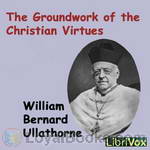 The Groundwork of the Christian Virtues
The Groundwork of the Christian Virtues
William Bernard Ullathorne was a Benedictine monk and Roman Catholic priest who ministered in Australia from 1833 until 1840 and then returned to his native England, where he was ordained a bishop in 1847 and served as Bishop of Birmingham from 1850 until 1888. He is best known for his catechetical trilogy: The Endowments of Man, The Groundwork of the Christian Virtues, and Christian Patience, published in the 1880s. The Groundwork of the Christian Virtues is presented in sixteen lectures, wherein Bishop Ullathorne makes the case that the virtue of humility is the foundation of all virtues, especially of the three theological virtues and the four cardinal moral virtues... | |
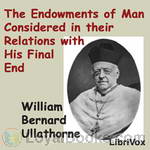 The Endowments of Man Considered in Their Relations with His Final End
The Endowments of Man Considered in Their Relations with His Final End
William Bernard Ullathorne was a Benedictine monk and Roman Catholic priest who ministered in Australia from 1833 until 1840 and then returned to his native England, where he was ordained a bishop in 1847 and served as Roman Catholic Bishop of Birmingham from 1850 until 1888. He is best known for his catechetical trilogy: The Endowments of Man, The Groundwork of the Christian Virtues, and Christian Patience, published in the 1880s. The Endowments of Man is presented in fourteen lectures, adapted from lectures originally delivered to clerics in Olton, England, at St... | |